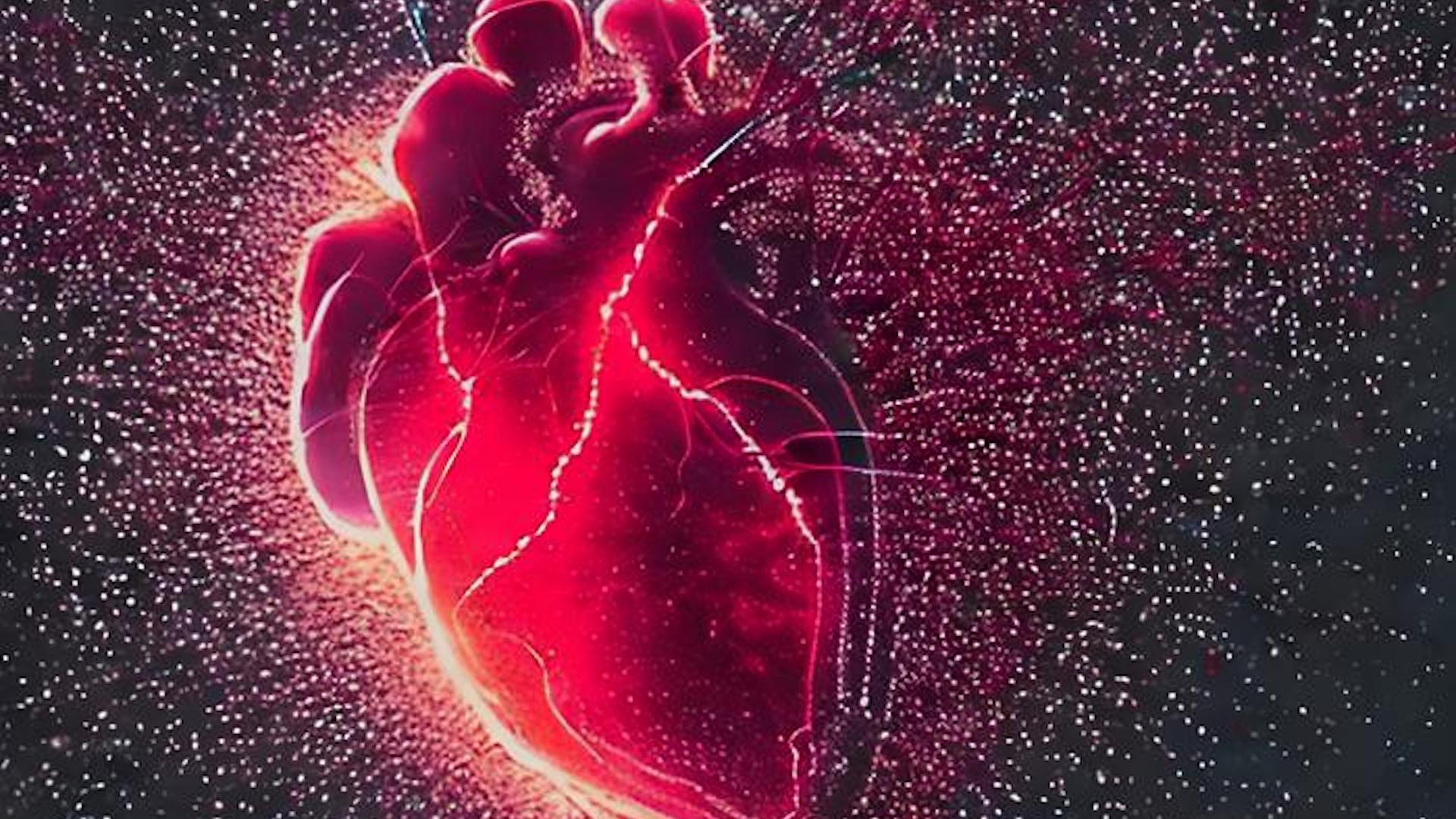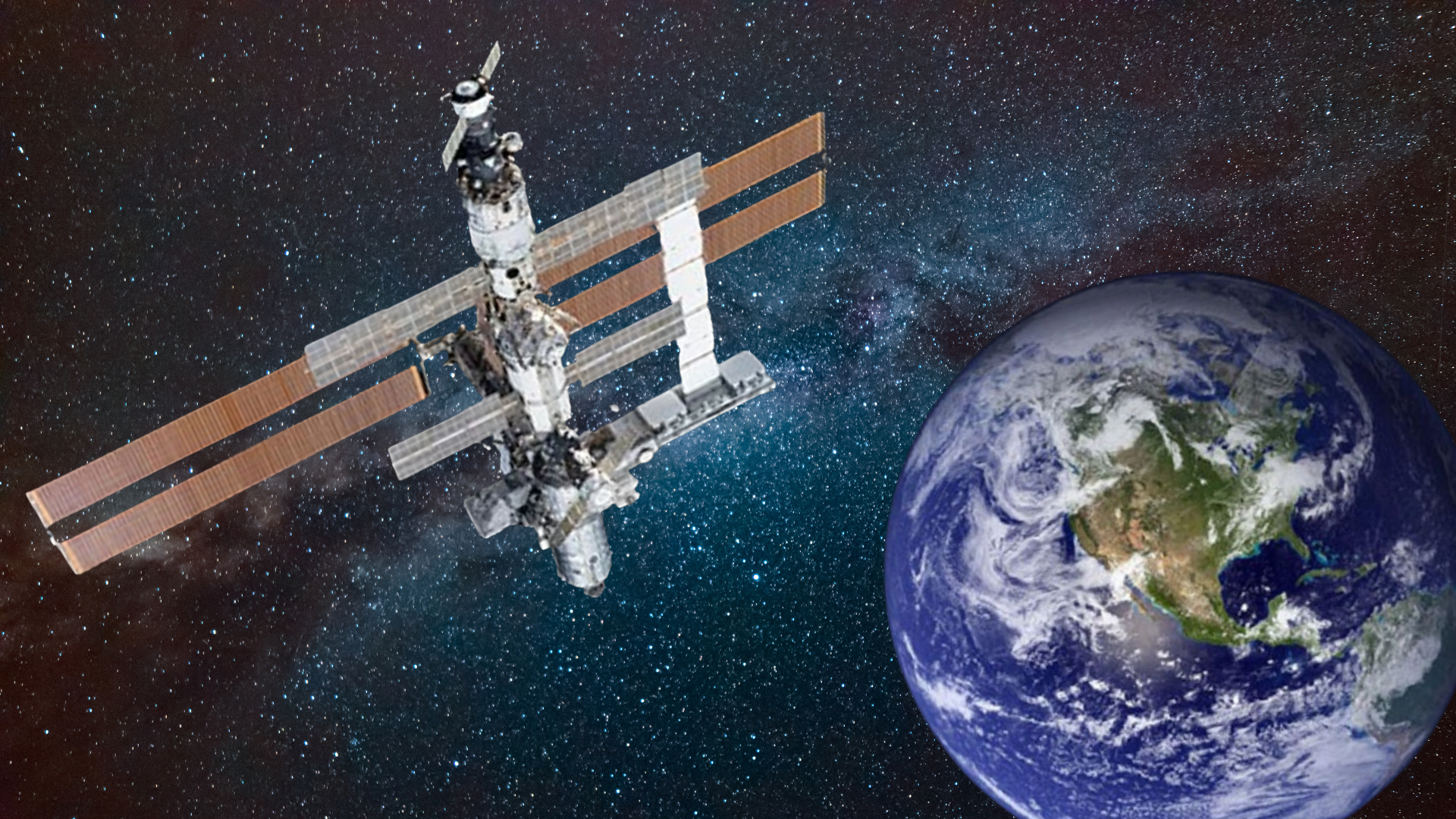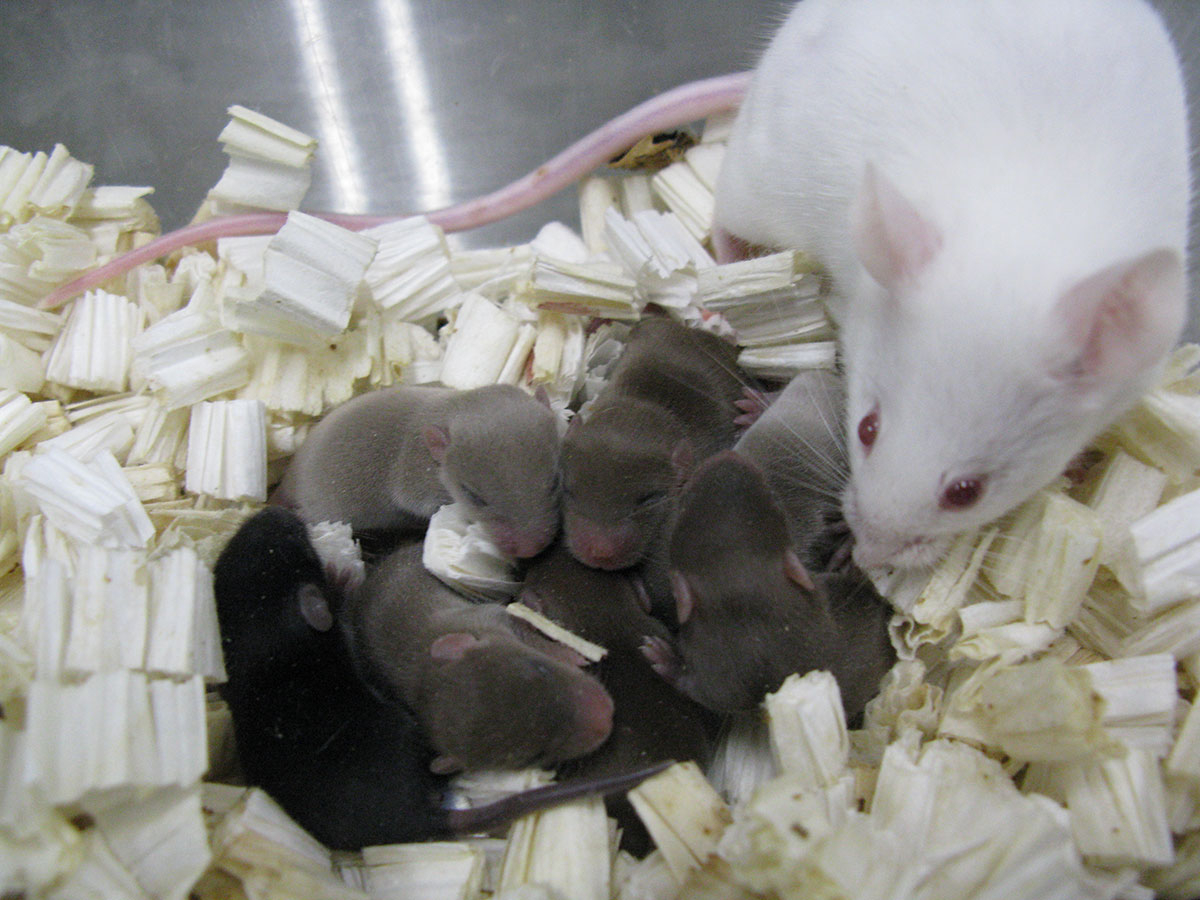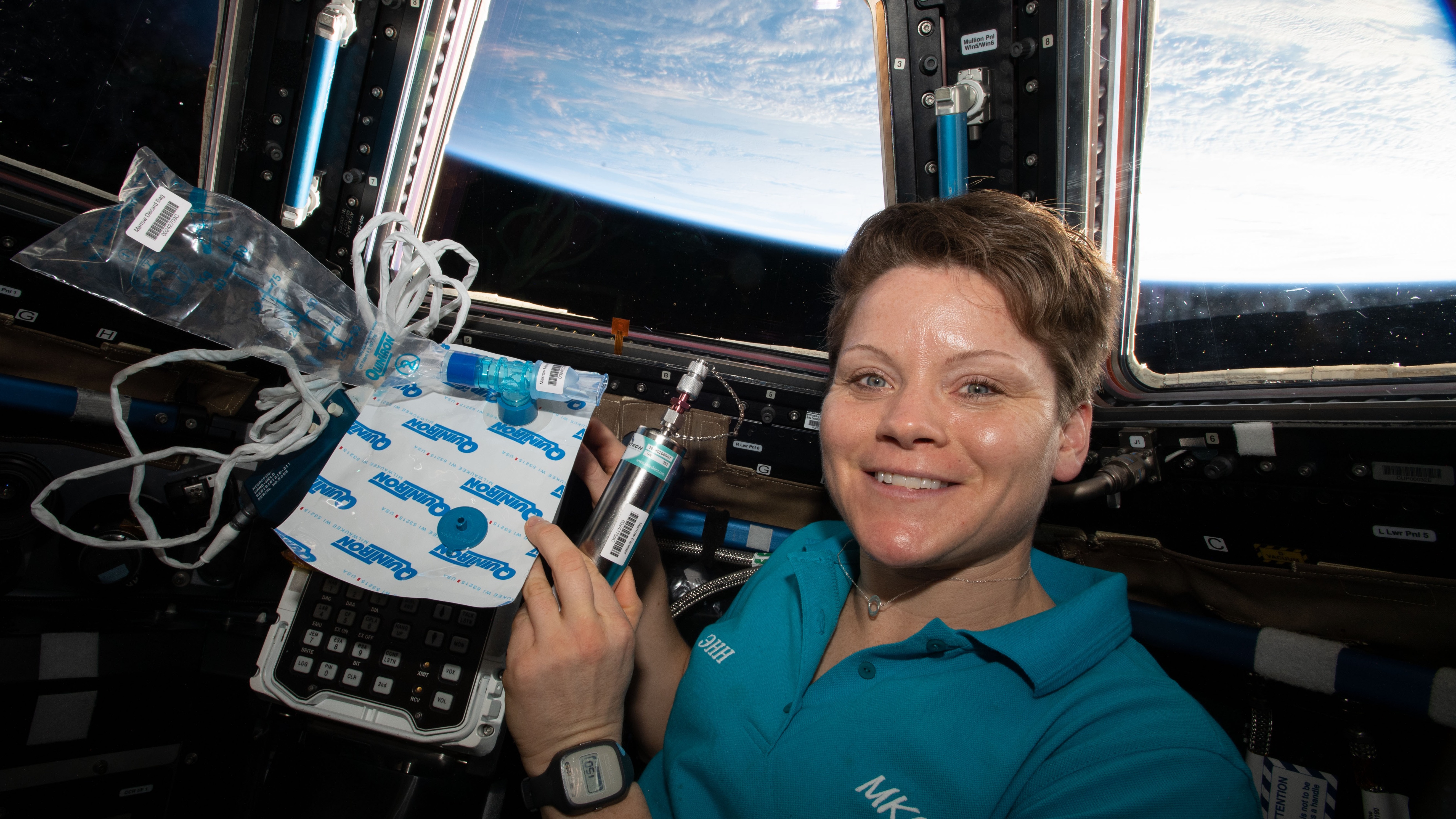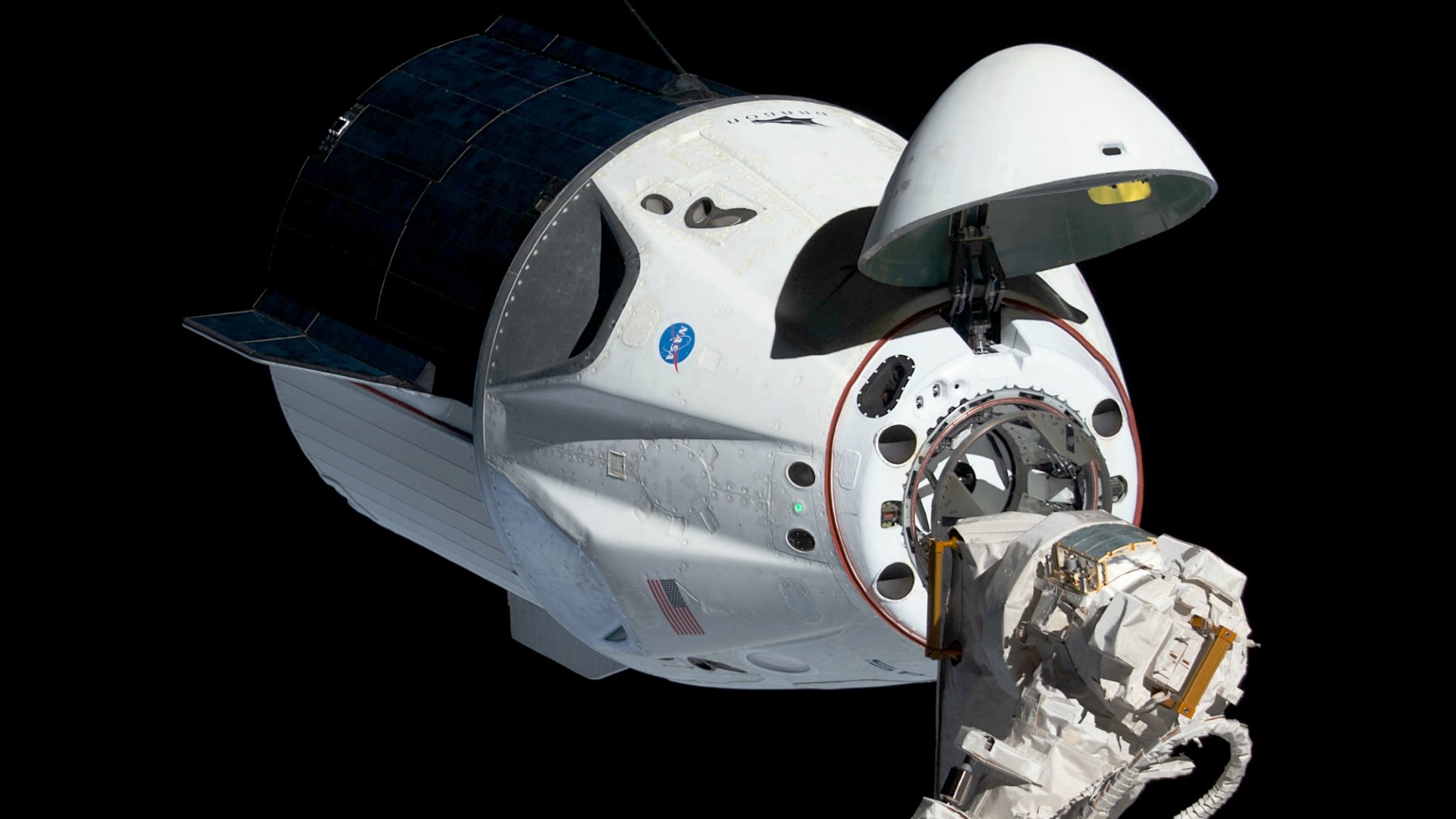12 space medicine findings from 2023 that could help astronauts reach Mars one day
Scientists are trying to figure out what happens to the human body when it ventures off the planet it evolved to live on.
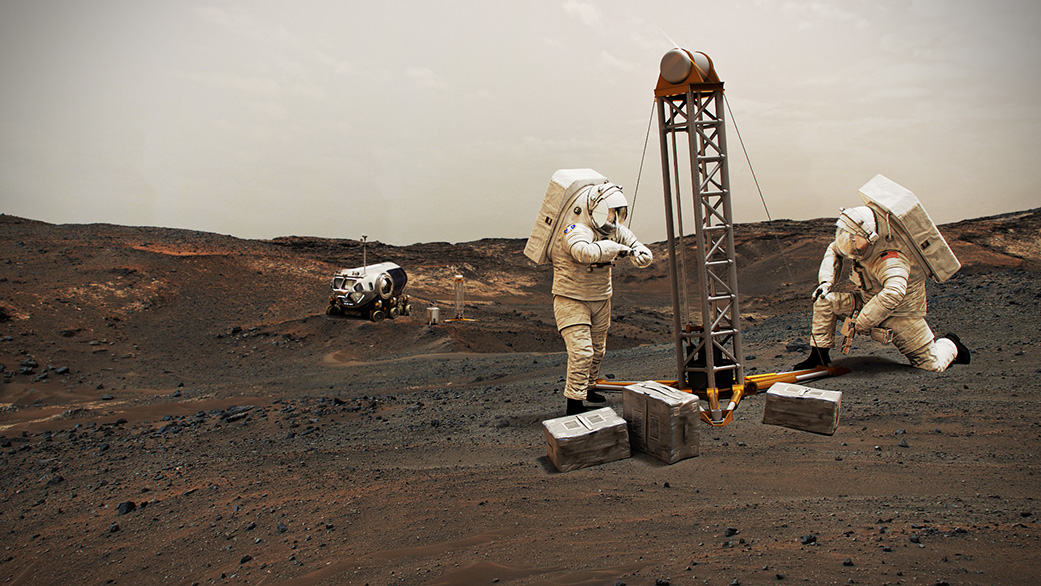
- 1. Hibernation might be an option for long-duration space travelers
- 2. The human brain relies on gravity more than you might think
- 3. 22 kind souls might be the recipe for a Mars society
- 4. T cells have a hard time with space-based microbial battles
- 5. These scientists are trying to 3D-print hearts on the ISS
- 6. Okay, but is the ISS even safe for humans? Will other space labs be?
- 7. Space babies! Well, space mouse babies for now
- 8. An experimental drug to treat bone loss shows promise in mice
- 9. An astronaut lamp for the humans who can't wake with the sun
- 10. Why female crews may have an easier time on Mars
- 11. Blood
- 12. This stunning 2024 mission will absolutely kick off next year's list
It isn't yet clear when humans will finally begin spending multiple years (perhaps even decades) in space while constructing space stations, Mars habitats, offworld rovers, and probably a slew of other stunning things I can barely fathom from my cozy Earth couch. What is clear, however, is that our current trajectory suggests such a time will certainly arrive.
Every day, scientists are working hard to make sure we reach the point when our species becomes interplanetary — the era during which we will literally "be" the aliens while exploring the Red Planet or floating alongside Jovian gravity. There's lots to consider. Engineers will need to develop next-generation rockets that can propel astronauts across massive distances in a reasonable time frame. Mission planners will need to learn where on a planet or moon's surface an extraterrestrial society could thrive. Ethicists will need to consider how laws and moral codes would work beyond Earth. Policymakers will need to worry about funding these efforts. Physicists will need to consider how to insert capsules into the orbits of other worlds — orbits they're still just getting hang of.
But arguably, I'd say the greatest onus will fall on medical experts.
Related: 'Why Am I Taller?' explores what happens to the human body in space
Doctors, researchers, surgeons, physical therapists and even psychiatrists will need to figure out what'll happen to the bodies of those brave future humans headed to the embrace of space. Astronauts are Earthlings after all; they're built to live on Earth. In microgravity, in hypergravity, on atmosphere-less worlds and on fast-moving vessels, their bodies will weaken. Their homeostasis will be interrupted. In isolation, their minds will be tested. And they should be prepared for that.
So, without further ado, here are some 2023 progress reports on the burgeoning field of space medicine.
1. Hibernation might be an option for long-duration space travelers
For some time now, scientists have toyed with the idea of having astronauts tap into the sort of "hibernation" practices we see animals take part in during the winter. Think, bears.
Breaking space news, the latest updates on rocket launches, skywatching events and more!
I mean, it'd take six to nine months for current technology to bring humans to Mars, for instance, which means anyone headed to the Red Planet would need to bring six to nine months of supplies to stay afloat during the journey. And that's just one way. This would cost quite a bit of money, yes, but moreover, living in microgravity for so long would be pretty taxing on the human body. Such an environment leads to substantial bone and muscle loss; astronauts on the International Space Station (ISS) have regimented exercises to combat those effects for even their short-duration trips. Who's to say what a very long excursion, of years or decades, would do to the human body.
So, like bears hibernate to conserve energy and pass time when resources are limited due to snowy weather, scientists think there's a way to have astronauts hibernate on the way to Mars. If animals can simply bounce back to their daily routines after months of hibernation, perhaps humans will be able to, too. Hibernation is different than just being in a coma; bedridden patients don't wake up as springy as post-hibernation bears do.
Toward that end, in January, NASA announced that it's looking into the hibernation methods of arctic squirrels.
"This research could be used to help future missions, from the extreme of medically induced hibernation for long-term space missions, protecting astronauts from cabin fever, ionizing radiation, and much more," NASA said in a statement. "It could also prove effective in preventing muscle and bone loss in zero gravity."
Read more: NASA astronauts could hibernate on deep space missions thanks to arctic squirrels
2. The human brain relies on gravity more than you might think
At the risk of sounding lame, astronauts' most important tools in space will undoubtedly be their thinking caps. Umm… okay, sorry. But really, the human brain is a delicate, vital organ that kind of depends on gravity to function properly.
Such are the results of a study that came out in June. Scientists had looked into how brains are impacted by spaceflight. The team, in short, found that cavities in the brain known as "ventricles" can enlarge by a whopping 25% depending on how long the organ is exposed to microgravity. Without enough gravity, the brain starts to shift upward in the skull, creating pressure on the ventricles and forcing them to expand.
"The biggest jump comes when you go from two weeks to six months in space," Rachael Seidler, a space health researcher at the University of Florida in Gainesville and the study's senior author, said in a statement.
The brain's ventricles are filled with what's known as cerebrospinal fluid, a substance that fills the entire brain in general and keeps the organ "buoyant and cushioned," as the Mayo Clinic puts it. Though the team still isn't sure what this expansion might mean for long-term space missions, the scientists did find that it'd probably take at least three years for the ventricles to return to normal. But "waiting this long may not be a necessity," Seidler said. It appears that more work needs to be done on this front, but it's a start.
Read more: Long space missions take a toll on astronaut brains, study finds
3. 22 kind souls might be the recipe for a Mars society
Among the most interesting studies to come out this year concerning the path toward an offworld human presence was one that presented awfully specific conclusions.
To create a functional Mars settlement, scientists found, you'd probably need at least 22 people. And of these 22 people, it's probably best to have as many as possible who possess the "agreeable" personality trait. "The stress caused by accidents, as well as from interacting with other settlers, takes a toll, and agreeable personality types were assessed to be the most enduring for the long term, whereas neurotics showed least adaptation capacity," the team wrote in their study.
Of course, personality "types" are cookie-cutter categories that must be taken with a very large grain of salt. It's more likely that everyone has a bit of every trait to some degree. Thus, these results may be better considered the spine of a book, rather than the pages inside. Still, it's intriguing food for thought that I bet will spur some important discussions, and at the end of the day, it feels very human that we must consider social relationships in our blueprints for space habitation. It also makes me think about how NASA is literally testing how different people's psychologies handle the isolation and tribulations of living on a simulated Mars environment in preparation for the real thing. And, as I've mentioned in many an article before, this just really makes me think about the novel "Red Mars."
Read more: We could start a settlement on Mars with just 22 people, scientists say
4. T cells have a hard time with space-based microbial battles
More often than not (including in this very article) discussions surrounding microgravity-induced body changes involve bone loss and muscle loss. It's because those are some of the most noticeable effects we see happening to astronauts stationed on the International Space Station. But other body systems undergo alterations as well, as we saw with the aforementioned neurological system.
In August, scientists announced some updates on how yet another system fares in space: the immune system.
They exposed eight healthy subjects to simulated microgravity conditions on Earth for a period of three weeks, performing blood analyses before the experiment, on day seven, on day 14, on day 21, and a week after the experiment. T cells, which are a type of white blood cell crucial in fighting off tumor cells and infections, began to resemble so-called "naive T cells" during the experiment. These are the kind that have not yet encountered any intruders, meaning they'd take longer to be activated and thus are less effective at fighting those infections, study co-leader Carlos Gallardo Dodd explained in a statement.
On the bright side, around the 21-day mark, some original T cell behavior began to return. But then, after the experiment, the naive expression seemed to return. This seems like a lead.
Read more: Astronauts' immune systems could be disturbed by microgravity, scientists find
5. These scientists are trying to 3D-print hearts on the ISS
Another body system scientists will need to worry about when sending humans into space's void is the cardiovascular system. Yup, the human heart. That fist-sized muscle pumping in your chest right now, keeping you alive on the comfort of Earth.
A program dubbed Pulse is on the case, as it intends to send extremely anatomically accurate, fully formed artificial hearts to the International Space Station in the near future and test how they react to the environment. Scientists have previously sent cardiac tissue samples to the ISS, and astronauts on the station test their own hearts locked within their bodies periodically, but if this works, it'd mark the first time a totally lab-grown "human" heart made its way to the orbiting space laboratory. Stellar.
Read more: 3D-printed hearts on ISS could help astronauts travel to deep space
6. Okay, but is the ISS even safe for humans? Will other space labs be?
When astronauts eventually head to the great unknown for super-duper long periods of time, they won't just be living in the extreme environment of space. They'll be living in the extreme environment of some sort of capsule that's rocketed into the extreme environment of space. Take the International Space Station, for instance. As we need to keep our homes well-ventilated and free of harmful gases, so too must humans living in offworld laboratories or shelters.
Well, in August, scientists found that the ISS may have chemical contaminant concentrations that exceed what you'd find in a standard home in the U.S. or Europe. To be clear, though, they were technically in line with the average figures in homes across Earth as a whole. Some of these contaminants, however, can harm humans. This finding actually bolsters a few adjacent studies concerning spaceborne lab cleanliness, such as this one about hitchhiking microbes that can make astronauts sick, and this one about fungi on the ISS.
7. Space babies! Well, space mouse babies for now
If humans start a space settlement orbiting the moon someday, it's inevitable that we're going to see some space lovers, space marriages, and eventually, space babies! But does a healthy human baby and a healthy birth of a human baby rely on gravity? Or on the unique nature of Earth in some way?
That's what scientists are trying to figure out — and, on the bright side, one team announced in October that it managed to grow mouse embryos onboard the ISS for the first time ever. This was a promising find, revealing that mammals can likely be born and thrive in space. Of course, however, this is a classic "just say it's in mice" situation. Human testing impending?
Read more: Can humans reproduce in space? Mouse breakthrough on ISS a promising sign
8. An experimental drug to treat bone loss shows promise in mice
In another ode to our scientific partners in crime (mice), scientists managed to run some pretty positive-looking experiments on a new drug that could help the whole microgravity bone loss conundrum.
The drug, known as "BP-NELL-PEG," basically harnesses a modified version of a well-known protein found in the human body." Again, however, the promise of this bone-formation-promoting drug has only been demonstrated in mice so far.
"If human studies bear this out, BP-NELL-PEG could be a promising tool to combat bone loss and musculoskeletal deterioration, especially when conventional resistance training is not feasible due to injuries or other incapacitating factors," Dr. Kang Ting, a professor at the Forsyth Institute in Massachusetts and co-author of the study, said in a statement.
Dr. Ting, interestingly, first discovered the bone-forming effects of the unmodified protein the drug is based on, known as "NELL-1," over 20 years ago.
Read more: New drug shows potential to aid astronauts during future missions to moon and Mars
9. An astronaut lamp for the humans who can't wake with the sun
Imagine a life in which you experienced 16 sunrises and 16 sunsets every single day. Imagine trying to catch some sleep as that happens. I am surely speaking for people besides myself when I say I can barely string together seven hours of rest between a singular sunrise and sunset each day.
Well, this unhinged fantasy is a reality for everyone on the ISS. Plus, they sleep floating. Strapped to the wall. And in fact, those 16 sunrises and sunsets aren't even above them like ours are. The sky is… below them.
Which is precisely why scientists have fashioned a special lamp that regulates light patterns to help astronauts get some shut-eye. If something goes wrong with the station, we definitely don't want insomnia to be the reason why the space crew can't fix it.
Read more: Sleeping on the ISS isn't easy. This lamp for astronauts could help
10. Why female crews may have an easier time on Mars
It is a wonder this study came out before the "Barbie" movie was released. Scientists announced in April that their study results support a decades-old idea that all-female crews would have an easier time navigating long-duration space missions.
"On average, women tend to be smaller than men, and so this metabolic advantage may be greater in women, as suggested by our calculations," Jonathan Scott, a researcher at the French Institute for Space Medicine and Physiology and the study's lead author, told Space.com. "This is why we concluded that there may be specific metabolic or life support resource operational advantages to all-female crews during future human space exploration missions."
Such crews would also cost less money, the team said, though the researchers emphasized that this is all very theoretical and that, at the very least, the results should help mission planners train future astronauts regardless of sex.
"We don't want to set up this binary competition," Dr. Saralyn Mark, health innovation director at Star Harbor, a spaceflight training facility in Colorado, told Space.com. "In today's world, we have the technology; we have the capabilities to democratize space to ensure that there is space for all."
Read more: Should future Mars missions have all-female crews?
11. Blood
Now that I'm writing this, August seems to have been a major moment for space medicine announcements. In addition to that T-cell update and ISS contamination insight, August's studies included one about how scientists learned that astronauts who headed to space for long periods of time had lower amounts of fat in their bone marrow after returning to Earth.
Those decreased amounts seemed to last for at least a month. It's unsurprising that the hypothesis here has to do with, yes, the bone loss thing.
"We think the body is using this fat to help replace red blood cells and rebuild bone that has been lost during space travel," study senior author Guy Trudel, a rehabilitation physician and researcher at The Ottawa Hospital and professor at the University of Ottawa, said in a statement.
So, with a little deduction, this also means astronauts spending lots of time in space have fewer red blood cells than they would if they were on Earth. Having a low red blood cell count, aka being anemic, can be harmful, because these cells are like messengers carrying oxygen throughout the human body.
"Thankfully, anemia isn't a problem in space when your body is weightless, but when landing on Earth and potentially on other planets or moons with gravity, anemia would affect energy, endurance and strength and could threaten mission objectives," Trudel said. "If we can find out exactly what’s controlling this anemia, we might be able to improve prevention and treatment."
Read more: Fatty tissue helps replenish bone and red blood cells in space
12. This stunning 2024 mission will absolutely kick off next year's list
To round this list off, I thought I'd highlight a very space-medicine-esque mission planned for the coming year: Ax-3.
Ax-3, the third private crewed mission organized by Houston company Axiom Space, is set to launch in January of 2024, bringing a wonderful collection of microgravity health experiments to the ISS. The crewmembers will spend 14 days docked to the orbiting laboratory while carrying out studies such as one that concerns an artificial intelligence system that can detect over 70 types of disease through coughing and speaking sounds. The hope is this device can help scientists monitor astronaut health remotely.
Another study will look at how amyloid beta (Aβ) proteins, which are proteins that disrupt the folding and unfolding processes of other proteins and are related to diseases like Alzheimer's, react in microgravity environments. There will also be bone density loss studies, red blood cell studies, and even cognitive studies such as stress tests. And that's just the tip of the iceberg, really.
It's also worth mentioning that these pioneering experiments — and in fact every single space medicine study in this entire list — won't only have implications for humanity's future space adventures. They have the potential to revolutionize medicine back home as well. Microgravity offers a unique opportunity to study how the human body works in a totally different environment — possibly revealing aspects of cancer cells or neurodegenerative mechanisms that we can't quite make out in terrestrial conditions.
2023 was definitely a satisfying year for the ever-burgeoning field of space medicine. With Ax-3 in store for 2024, I hope next year's list is even better.
Read more: Axiom Space's 3rd private mission will conduct pioneering microgravity experiments on ISS

Monisha Ravisetti is Space.com's Astronomy Editor. She covers black holes, star explosions, gravitational waves, exoplanet discoveries and other enigmas hidden across the fabric of space and time. Previously, she was a science writer at CNET, and before that, reported for The Academic Times. Prior to becoming a writer, she was an immunology researcher at Weill Cornell Medical Center in New York. She graduated from New York University in 2018 with a B.A. in philosophy, physics and chemistry. She spends too much time playing online chess. Her favorite planet is Earth.



